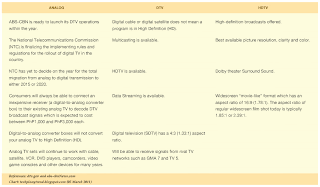Greenpeace* today marked the 25th anniversary of the Chernobyl nuclear disaster with a call to governments of Southeast Asia to abandon all plans of developing nuclear power plants in the region to ensure the safety of its citizens. Greenpeace is calling on Philippine President Noynoy Aquino to invest heavily in energy efficiency and harness clean, safe renewable energies to meet the country’s energy requirements instead of dirty coal and dangerous nuclear energy.
“Chernobyl is to date the world’s worst civilian nuclear accident, but the unfolding disaster in Fukushima, Japan, demonstrates that no amount of technological sophistication or safety culture can prepare any country or its people for the inherent dangers of nuclear energy. Like in Chernobyl, the Fukushima incident has shown that we cannot control or manage nuclear energy and its fallout,” said Amalie Obusan, Greenpeace Southeast Asia Climate and Energy Campaigner.
A quarter of a century after Chernobyl, the situation in the area surrounding the Chernobyl reactor shows few signs of improvement. Widespread contamination, constant resettlements and long-term health impacts still pose threats to communities. And, despite ‘modernizations’, the root causes of nuclear technology’s vulnerability to accidents remain the same: unexpected technological failures, operator errors, poor safety standards due to political and economic pressures, lack of transparency in the industry as a whole, and natural disasters.
However, the Philippine Energy Plan for 2009-2030 still contains options for the adoption of nuclear power in the country. Under the Energy Reform Agenda of the current administration, part of the DOE’s thrusts for 2013-2016 is to strengthen policy researches and studies in aid of executive and legislative action that will facilitate the operation of a 2,000-megawatt nuclear power plant in 2025.
Strong public resistance in 2008 derailed plans to revive the mothballed Bataan Nuclear Power Plant. But the Philippines, as with rest of the ASEAN countries, despite their vulnerability to natural disasters in the Pacific “ring of fire” and their general lack of disaster preparedness, have not yet ruled out nuclear power and the great costs and risks it entails.
Costs to manage the Chernobyl disaster which up to now continues to drain Ukraine and Europe millions of Euro annually, is estimated to cost more than 13 times the Philippine government’s budget for 2011. The disaster also severely contaminated between 125,000 and 150,000 square kilometres (equivalent to around half the Philippines’ total land area) in Belarus, Russia and the Ukraine. A Greenpeace-commissioned study based on Belarus national cancer statistics estimated that approximately 270,000 cancers and 93,000 fatal cancer cases will be caused by Chernobyl.
Greenpeace believes that to secure a safe and better future, countries must choose renewable energy over nuclear power. Greenpeace has long argued that renewable energy has the potential to meet a substantial share of our future energy demand. The Energy [R]evolution scenario details how – combined with energy efficiency and a transformed electricity grid – renewable energy could produce 95% of electricity worldwide by 2050. Other studies have made predictions for different time frames or regions. PricewaterhouseCoopers, for example, predicts that Europe and North Africa could run on 100% renewable energy by 2050.
*Greenpeace is an independent global campaigning organization that acts to change attitudes and behavior to protect and conserve the environment and to promote peace.








